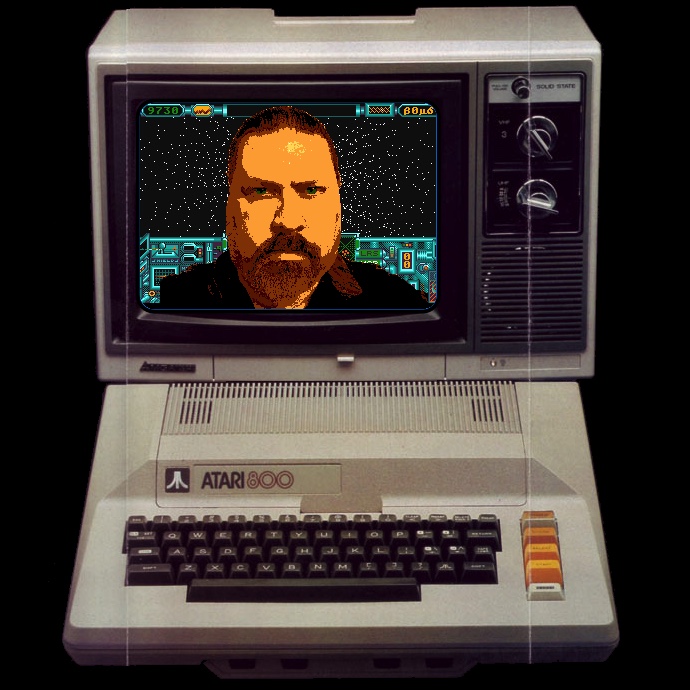I don’t really know how to structure this question, but yeah, why is always Naval and never Aviation?
I think most generally it’s because naval analogues are probably the closest when you’re talking about large space-based fighting vessels. The air force doesn’t operate aircraft carriers, battleships, or destroyers. The navy, however, does (or did in the case of battleships). Those large sea based vessels often class quite nicely into a lot of sci-fi media for large ships.
The small ships you see are often based off of a carrier equivalent. Even when they’re terrestrially based, it makes a lot of sense to streamline your military structure to have just one “space force”, rather than trying to break it up into two entities like the “space navy” and “space air force”, each with their own standards and logistical supply networks.
That’s always been my take. The Navy has the experience with big-ship operations, and operating smaller craft from those large ships, and it’s supply and logistics would likely evolve from ocean to space faring ships.
The Marines are historically an amphibious force, an extension of the Navy, specialized in ship-to-ship and ship-to-shore operations; ship-to-surface would be the evolution of that.I think you’re largely on the ball here, but thinking about it further makes me question this… early spaceflight was almost exclusively done by people selected out of aviation forces. While we haven’t operated a single craft outside of Earth’s Sphere of Influence and thus been outside of range for largely terrestrial based control of the incredibly complex operations of a spacecraft, I wonder how that much of that aviation culture bleeds into spacecraft operations.
Though, this may change when a spacecraft can operate outside of Earth’s watchful eye for a period of time.
While it is true that most early astronauts were aviators, specifically test pilots, it’s also important to consider that it was the case then as it is now that the US Navy operates more planes and has more pilots than the US Air Force. Just percentage wise, that would edge towards more Navy pilots who use the naval terminology in their ranks (the Mercury 7 were 4 Navy pilots, 2 Air Force, and 1 Marine I think, though I could be wrong). I would assume that the culture would skew even more Naval as space flight progresses as early spaceflight was a couple of guys in a tin can to larger scale craft.
Another weird quirk too is that common military rank terms like “captain” and “lieutenant” don’t line up between the Navy and the others (at least in the US). So the OG Star Trek guys would be Colonel Kirk and Captain Uhura under Air Force terminology, and that just sounds weird
The USAF has significantly more planes and pilots then the USN.
However, the USN is technically the second largest air force currently operating in the world, behind the USAF.
Yeah… I don’t know where the claim that the navy has more pilots than the Air Force came from? The Air Force has more than 20k active duty pilots, while the Navy only has around 7k.
And it does sound weird in Stargate when Earth gets starships but uses the Air Force rank system.
To throw an add on to your comment in case readers have the ideal that the Navy’s mostly flying cargo planes, Top Gun is the Navy Fighter Weapons School. The Navy is flying a decent number of cargo planes but they also have some of the best fighter pilots in the world. Also flying a Space Shuttle would be a lot closer to flying a cargo plane than a fighter jet. Space Shuttles weren’t designed to maximize speed and maneuverability so that kinda makes pointing out that the Navy has amazing fighter pilots irrelevant, but they do.
Another weird quirk too is that common military rank terms like “captain” and “lieutenant” don’t line up between the Navy and the others (at least in the US). So the OG Star Trek guys would be Colonel Kirk and Captain Uhura under Air Force terminology, and that just sounds weird
Colonel O’Neill and Captain Carter
I think you’d have to better define what the culture is that you think would change. For example, I’m sure some terms used on the shuttle are not used at all in other vehicles simply because of its design. I think naval aviators have generally been slightly more numerous in the astronaut corps, although only by a small number. I don’t think any ship has reached the point in size where there’s a dude who is paid to think about things and everyone else hits the buttons.
That might not even happen, though. Space isn’t like an ocean where you can move around arbitrarily; craft mostly follow ballistic trajectories. As it is, it’s actually more like artillery with human cargo than like aviation, let alone a boat that can go anywhere anytime.
The exceptions are craft with slow-burn engines like ion drives, which allow enough delta-V for a craft to hit more than one destination. Those still need energy, though, so they need to be near something like the sun to operate indefinitely. Over interstellar distances, a 20-year boost at millinewtons is still relatively short, and we’re back to ballistic trajectories. On such a mission, if the crew is human and awake it would be more a matter of keeping everything operating as intended than deciding anything. I expect any culture that develops would be more about the off-time.
Speaking of boosts, burns and delta-V, you can see a bit of space’s own culture growing already. My best guess is that the structure of a future interstellar mission would be a bit familiar to today’s ISS astronauts.
Sci-fi spaceships often have the ability to dump solar-system levels of energy into propulsion, so they really only follow orbital mechanics when they’re parked at a planet. Consider if you could get from Earth to Mars in a few seconds, you’d pretty much just point yourself at it and go.
Yeah, we were segueing into hard sci-fi and the real future here, so I’d thought I’d bring that up. OP was about this tendency in general.
In soft sci-fi you can just handwave stuff, with the basic way frames of reference work being a frequent casualty (via FTL travel). If traveling by starship is like traveling by boat, it makes sense day-to-day life would be a bit boat-like, and so that’s where many writers have gone.
I think the best reasoning for this has more to do with the practicalities of writing than with the accuracy of the speculation about future human endeavours. As you say, there haven’t been any naval missions in space, which is exactly why when drawing from more familiar analogues you can find a richer vein by looking upon naval tradition instead. While fiction, and sci-fi in particular is going to involve some imagination to literally create and invent things all fiction tends to deal in with what we know and only a small dose of the fantastical to reframe it in a more interesting context.
The lack of similar real life equivalents for long missions with a lot of personnel and very large craft and opportunities for internal rivalries, promotions, ambition and rival navies with largely equivalent structures and traditions in current spaceflight, means that the work of writing about scenarios where that happens in space is going to be much harder and probably less resonant without drawing on something where all of that already exists. In addition to that, the hundreds of years of different naval traditions and rituals makes for more pomp and circumstance and delivers a ready-made atmosphere that’s well understood even by the layperson as in those hundreds of years it has seeped in to the public imagination.
Tapping in to all the practical similarities between the scenarios often portrayed in SciFi and naval contexts along with all that cultural baggage makes for a much richer and more vivid atmosphere and setting within which the characters can interact with one another. This is reason enough to transpose naval tropes in to your space based science fiction story whether it makes the most sense or not for the way such endeavours might actually be organized in reality in the future.
I think this is mainly it.
Additionally, aviation terminology is often very specialized, usually pertaining to aerodynamics and the like. But ship terminology is often more general.
For example, airplanes have aerofoils and control surfaces, where ships (both space and maritime) have thrusters.
I want a meme where the air force is like “we conquered the skies, next is space!” And the Navy is like guess what MFers.
Halo has the UNSC Navy, the UNSC Marines, and the UNSC Army working together in space.
Because they’re way more like ships than they are planes – Planes don’t stay in the air indefinitely or take long voyages, have large crews, etc – They often treat the fighter pilot space ship people like AF though – Like if I have a ‘carrier’ with a bunch of smaller ships on it
Because people don’t live in an airplane together for long periods of time. Pilots in sci fi are often aviation themed, but captains are naval because spaceships beyond our current level are closer to battleships, cruise ships, or aircraft carriers than fighter jets or passenger liners.
The purpose of Air Force is to monitor the skies, project power at a distance, and provide air superiority.
The purpose of Navy is to put a floating fortress off your shore and bombard your cities, carry around materiel, men, and aircraft, and patrol a vast volume of ocean.
So Navy structures fit the mission better, and this has been true since early SF.
They’re called “spaceships”
My theory is that they’re called ships cos if you switch off the engine, it’ll stop and just sit there
I have it on good authority that this does not happen with aeroplanes
Doesn’t happen with spacecraft either, despite what Hollywood often depicts. In order to ‘stop’ in space, you actually have to generate thrust. The scary thing that can happen if you lose your engine in space isn’t getting stuck in one place, it’s smashing into your destination at full speed.
The really scary thing if you lose your engine in space is that you might not smash into anything for a very very long time and die a slow death when you run out of air, water or food.
Well, start a garden in the weapons bay and everyone better get to work on the next generation of crew then.
Here is an alternative Piped link(s):
oh cruel fate, to be thusly boned.
Piped is a privacy-respecting open-source alternative frontend to YouTube.
I’m open-source; check me out at GitHub.
Or spacecraft commonly, as well.
Because space is an ocean.
Seriously mate, you didn’t warn about the TVTropes link? Some of us need to go to bed!
I was a good two hours on that bloody site, yawning my head off but unable to look away.
You must suffer with me
I think it often has to do with the scale of the ship. Operations on a starship with crew numbering in the dozens to hundreds might be closer to operations on a naval vessel than aviation. We don’t have aircraft with that scale of a crew or aircraft that operate away from base for such a long period of time.
The other thought is, uh, well that’s what Star Trek did.
The most crewed aircraft doesn’t even have the crew size of a British sloop!
In addition to what the others have said, in real life, international space law was based on maritime law. They even based directions on maritime law as the sailors used the stars to navigate, and that’s all you have in space to navigate with. So rockets and spacecraft call their directions the same as ships and sailing vessels, they have a port and starboard side, a bow and stern, up is zenith, down is nadir.
Fun fact the actual directions have some cool historical meanings. Nadir is the lowest point in elevation in the surrounding area, aka the bottom of the boat, and zenith is the area directly above you. So you could measure your latitude by measuring a star’s position relative to your zenith. Port was the side you docked on, because your steering oar was on your right. Starboard is a bastardization of the word stéorbord which is what the steering oar was called.
And it is important to note that the civilian aviation sector copied over civilian maritime sector.
The person in charge of the aircraft is the Captain, followed by numbers officers. This is similar to what happens in shipping. The chief flight attendant on an aircraft is the purser, which is the chief steward on a naval ship. There used to be Chief Engineer positions on some aircraft, similar to Chief Engineer positions on naval vessels.
The only reason the Air Force has its rank structure currently is because it branched off the Army.
I always had assumed Starboard being the opposite of port meaning you were navigating away from your home port to the stars.
A notable exception is the Stargate franchise, where Earth’s spacecraft are largely run by the US Air Force.
It also makes sense to not focus on the naval aspects of space flight when you almost never actually fly through space, and almost all your potential theaters of war share a common border (the stargate).
Also ExFor series where the UN’s only starship is run by the US Army. But that’s more… a consequence of events that lead an infantry soldier to inexplicably be in command of a starship. He even mentions how unusual the whole situation is, and to be in command over actual UN Navy officers. But he remains in command through being the only experienced skipper of a space warship in all of humanity regardless of being in the Army.
He also muses that starships wouldn’t be best to be crewed by blue water navy forces, but rather submariners because they too cannot go above deck and are accustomed to long deployments in a tube. A lot of space warfare in that series is sensor evasion and standoff engagements, also like subs.
Haha also has funny lines like “I tossed the ball against the wall. I guess I should call it a bulkhead but I’m in the Army and we call them walls”
Love ExFor. Did you listen to the audio drama? I think it’s like book 7.5 or something
True, but it’s only because the Stargate program is an Air Force program
Why does it matter why?
Because it explains why I guess. It’s the Air Force who has the space ships because those were possible only thanks to the Stargate program which was run by Air Force for around 6 years I think before Earth got it’s first spaceship (if you don’t count the goa’uld glider with Air Force decals slapped on it)
In the US at least, Air Force officer ranks match the Army and Marines. Sci fi tends to use those ranks for ground fighting teams.
Ship structure makes sense for a large ship. There is no similar aviation structure, the guy ultimately in charge is the aircraft is the pilot in command, generally the one flying the aircraft.
Some technical terms make more sense too. A hull is watertight, it translates well to a ship in space. A fuselage is describing the shape of the main body of an aircraft.
Space warfare is much closer to naval warfare on Earth, so naval tactics and strategies are more transferable when applied to space. For example: taking weeks to maneuver, and firing at your opponent 100,000 of kms away.
Air sorties are typically completed within hours, because it is ultimately limited by the fuel they can carry.
It’s a ship. You use ship terms.
More specifically because travel in space is nearer travel underwater like a sub than flying in a plane.
Naval terminology is cooler.
“I’m the Captain of the USS Enterprise.”
Vs
“I’m the Colonel of the Exploration/Reconnaissance/Fighter craft Enterprise.”
spaceSHIP
It’s called a spaceSHIP















